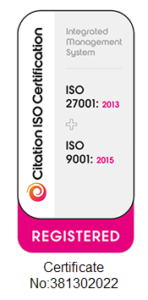Skilling Up and Planning Widely in the Brave New World of Virtual Meetings
The virtual meeting is here to stay – at least for the foreseeable future.
For the life sciences industry, not-for-profits and professional bodies – where corporate governance and legislation, never mind travel restrictions, are significant factors – the return to in-person meetings will be highly selective even when they can happen.
Indeed, the return to a ‘new normal’ is likely to involve more hybrid events, where people from the same region – such as the US and Canada or the Asia region – meet in person while others join remotely.
The question is, what does this mean both for those organisations that are looking at the alternatives and the meeting organisers they work with – whether internal or external?
We know from experience that managing events and meetings in the virtual space is a very different proposition, requiring a different skillset, different structures and differing engagement methods to physical meetings.
Consider the role of an in-person meeting planner. This person would need to plan for the production and the audio visual of the meeting to make sure the organisation’s requirements have been met and that the production team had been briefed, but the planner’s actual involvement in the physical production is mostly more limited.
In the virtual world, the planner has taken on the role of the production team as well as their usual role. That person is now managing sound checks, visual cues, seating recommendations, best platforms, tech functionality – can the participants be seen? Are there distractions behind them? – lighting, whether the speaker is rehearsed and comfortable, and so on.
Quality check
A high level of professionalism and functional tech capabilities are even more important when organisations are seeking to monetise and commercialise the event or meeting. It’s one thing having a quick ‘Beer O’clock’ call with your colleagues, but if you want to communicate the latest research, connect global audiences or you’re looking to drive audiences and membership, the quality of the virtual meeting needs to live up to audience quality expectations.
If virtual is to become the norm – and as I’ve stated, it seems likely it will be – meeting planners and businesses or organisations handling their meetings internally need to up-skill their teams, or alternately look to external suppliers to partner with who can ‘keep you safe’ and ensure you are delivering that level of professionalism that is expected in physical meetings.
It’s also important to recognise that there is not a one-size-fits-all approach to a virtual meeting just as there isn’t in the physical space. For example, you would use a different venue or provider depending on whether you are running a large convention compared with smaller working groups or advisory board meetings. The same is true when it comes to the platform and solutions you turn to for virtual meetings. More than likely what you will need is a selection of tools, resources and trained personnel to support your specific meeting needs.
For example, we’re currently managing several international virtual congresses that involve plenary sessions, multi-tracked agendas, different presentation formats, keynote speeches and presentations of the latest research. We’re also supporting team-building activities with pharmaceutical clients. The needs are vastly different. The first requires a content-rich platform along with highly organised production. In the second, to keep that team-building buzz going, we’re producing a virtual karaoke recording as part of their meeting. Don’t be afraid to look at integrating solutions, if necessary, to achieve your objectives.
Be prepared
One aspect that doesn’t change from physical to virtual is the need to manage the logistics. Every meeting needs to be planned, speakers and delegates need to be informed and briefed, rehearsals need to be held and messages communicated. Just because you’re switching to the virtual world doesn’t mean those crucial logistical elements can be forgotten.
As you begin planning your virtual meetings, think about the nitty-gritty details of what you want from the outset. What do you expect from the meeting? Is it part of a wider set of meetings, in which case what do you need to develop your overall strategy? Is it a pay-to-access meeting, and if so, how are you going to manage that access? Does the platform you’re using give you the flexibility or scale you need? And does your meeting planner have the depth of skills needed to adjust to the virtual world?
If you don’t have that skill set in-house or with your existing platform, find the external support you need to ensure what you deliver is professional, achieves your objectives, keeps you safe and reflects well on your organisation.
Caroline MacKenzie is the Operations Director at Open Audience, which specialises in making life sciences meetings more engaging with more positive, successful outcomes. The Open Audience team helps to strategise and prepare pre- and post-meeting as well as providing real-time support and guidance during the event. Open Audience also offers customisable, multilingual engagement platforms that include interactive polling, surveys, and ideas exchange.

